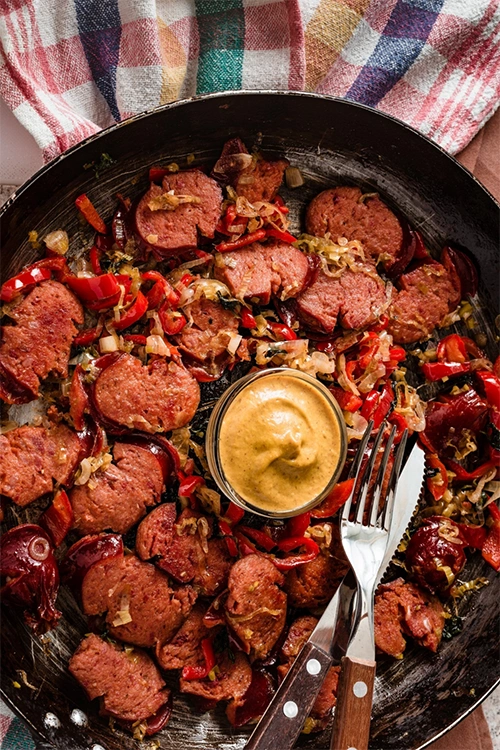

Top Health Benefits of Sausage & Veggie Skillet You Need to Know
This smoked sausage and veggie skillet is a nutrient-dense, flavor-packed dish that delivers a satisfying combination of protein, healthy fats, and essential vitamins and minerals. The sausage provides a substantial amount of high-quality protein, crucial for muscle repair and satiety, along with iron, vitamin B12, and zinc — nutrients often found in animal-based products. The inclusion of red bell peppers and onions enhances the dish with antioxidants like vitamin C, quercetin, and carotenoids, which support immune function and cellular health. Garlic not only adds bold flavor but also contains allicin, a compound with potential heart-protective and anti-inflammatory effects. This meal’s high protein and fat content makes it filling and sustaining, ideal for those following low-carb lifestyles. It’s also naturally gluten-free (when gluten-free sausage is used) and rich in flavor without needing added sugars or refined carbs, supporting blood sugar balance and metabolic health.
Recipe :
Serves 4
Enjoy your sizzling, flavor-packed sausage and veggie skillet!
When preparing this dish, it’s essential to pay attention to the quality and type of sausage used — opt for nitrate-free, minimally processed smoked sausages with clean, natural ingredients whenever possible. Slice the sausages evenly to ensure uniform cooking and a balanced texture throughout. Start by browning the sausage in a hot skillet to enhance its flavor through caramelization, then remove it briefly to sauté the vegetables separately for better texture and flavor layering. Avoid overcrowding the pan, as this can cause steaming instead of searing, which diminishes the dish’s savory depth. Use a cast-iron or stainless steel skillet for best browning results, and season to taste with smoked paprika, black pepper, or herbs for added complexity. Finally, avoid overcooking the vegetables — they should retain a bit of crunch to contrast the juicy sausage, making each bite more dynamic and enjoyable.

This dish fits well into several dietary frameworks but requires careful consideration for some. It’s ideal for ketogenic and paleo diets due to its high fat, low carbohydrate profile, and the absence of grains, legumes, or sugars. Those following a Mediterranean diet can enjoy this meal as long as high-quality, leaner sausage and olive oil are used. It’s also suitable for gluten-free diets, provided the sausage is certified gluten-free. However, this recipe is not appropriate for vegans or vegetarians, as it contains animal products with no plant-based alternatives included. It may also be too high in fat and sodium for those adhering strictly to the DASH (Dietary Approaches to Stop Hypertension) or low-calorie diets, unless modified with low-sodium sausage and reduced fat. For individuals practicing intermittent fasting, this meal makes a great post-fast option, offering ample nourishment and satiety in a compact serving window.
...